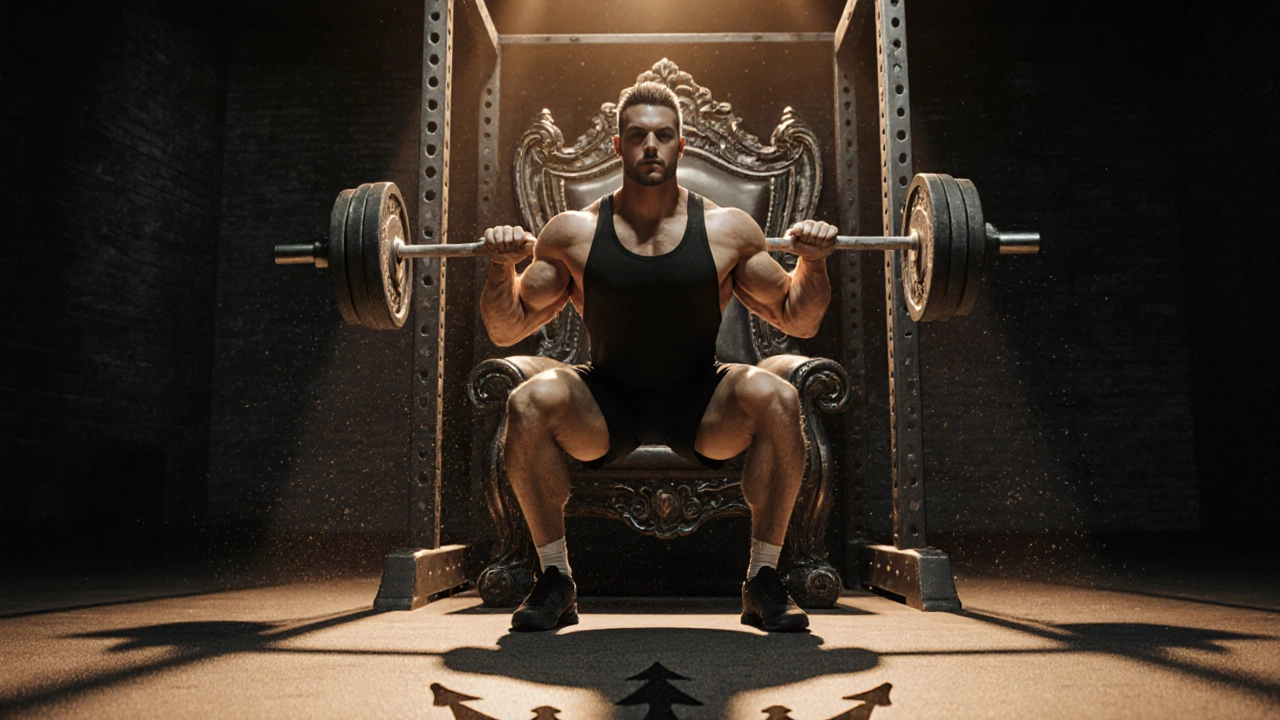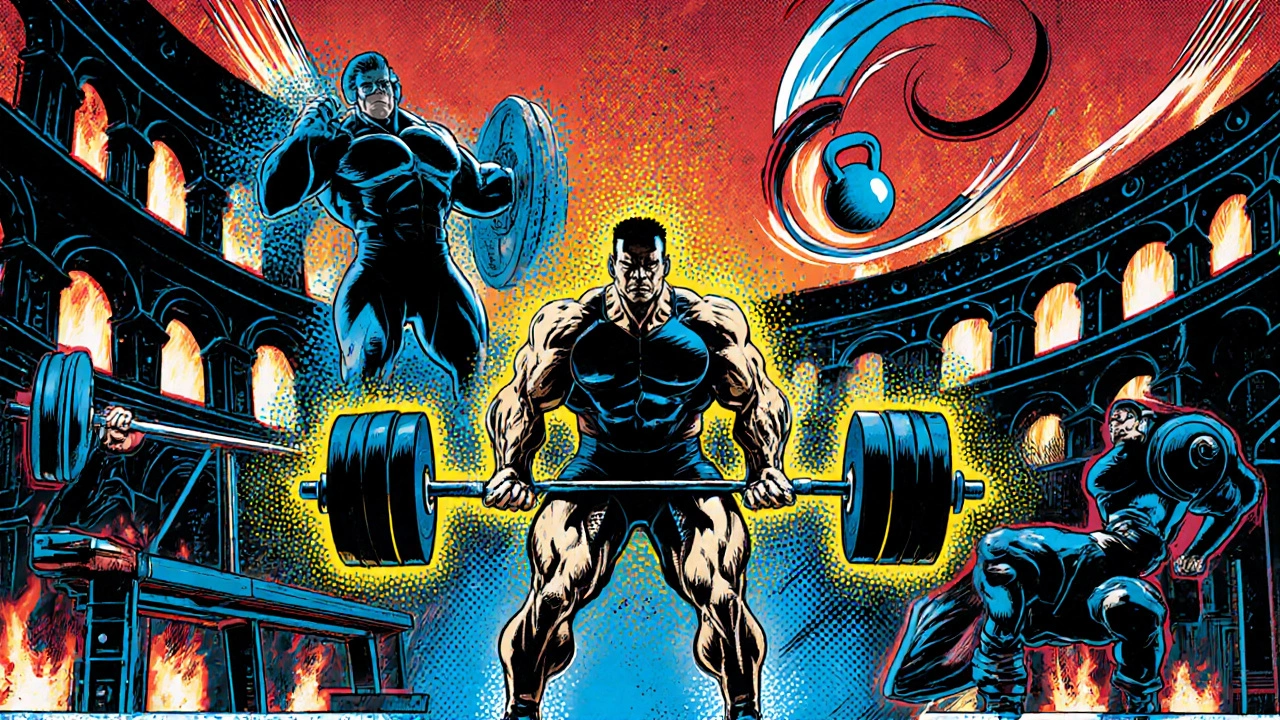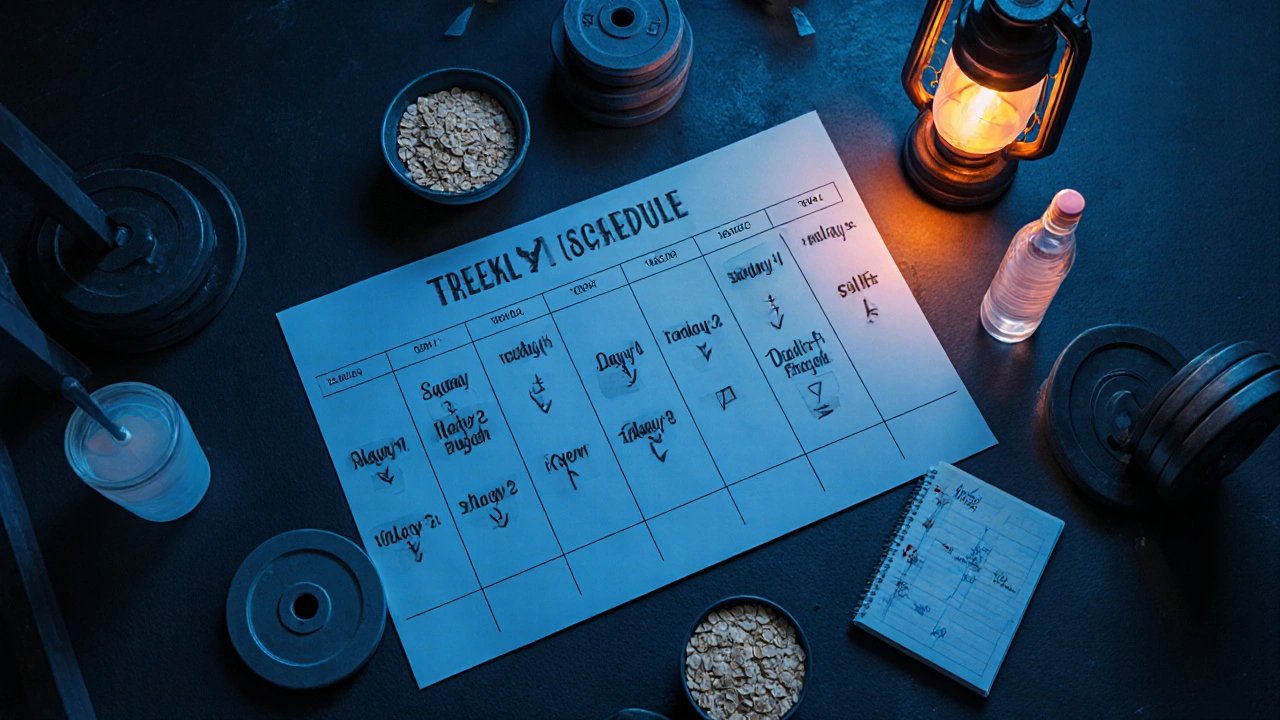
Estimate your maximum single-rep lift based on your working weight and reps. Used for program design and progress tracking.
When you hear Squat is a foundational lower‑body lift that targets the quadriceps, glutes, and core, you instantly think of raw power. In the world of strength exercises, the squat has earned the crown for a reason: it moves the most weight, recruits the largest muscle groups, and translates directly to everyday strength.
Before we crown any other lift, let’s break down what makes the squat the king. First, it’s a full‑body movement. Even though the emphasis is on the legs, the spine stays engaged, the core stabilizes, and the upper body helps balance the load. Second, it allows you to load the barbell heavier than almost any other exercise, which drives muscle hypertrophy and neural adaptations. Third, the biomechanics of a squat mirror real‑life actions like sitting down, lifting objects, and jumping, making it incredibly functional.
Studies from the Journal of Strength and Conditioning Research consistently show that athletes who train squats improve sprint speed, vertical jump, and even bench press performance. In short, the squat builds a solid foundation for every other lift.
No king rules alone. A well‑rounded strength program includes several other compound lifts that complement the squat. Below are the most respected members of the court.
| Exercise | Primary Muscle Groups | Typical Load (% of 1RM) | Functional Transfer | Training Goal |
|---|---|---|---|---|
| Squat | Quads, Glutes, Core | 80‑95% | Sitting/standing, jumping | Mass & strength |
| Deadlift | Hamstrings, Glutes, Lower back | 85‑100% | Picking up objects | Power & posterior chain |
| Bench Press | Pecs, Triceps, Anterior deltoids | 70‑85% | Pushing actions | Upper‑body hypertrophy |
| Overhead Press | Shoulders, Triceps, Core | 60‑75% | Lifting overhead | Shoulder stability |
| Power Clean | Full body (explosive) | 70‑85% | Explosive sports | Power & speed |

Integrating these lifts into a weekly routine is straightforward if you follow a balanced template. Below is a sample 4‑day split that lets the squat stay the focal point while still giving each lift its spotlight.
Notice the squat appears only once a week in this template. That’s enough to drive strength gains while preventing overuse. If you’re an advanced lifter, you can add a second squat day with a lighter variation like front squats or pause squats.
Even seasoned lifters slip up on these king‑size lifts. Spotting the error early saves weeks of wasted effort.
Growth comes from systematic overload. Here are three proven methods you can apply to any of the court members.
Pick one method per lift and rotate every 8‑12 weeks. The variation ensures continuous progress and reduces plateaus.

Powering through a squat or deadlift session demands fuel. Here are three quick nutrition rules that pair well with heavy training.
Yes, because it engages the largest muscle groups, allows the highest external load, and improves functional movements like standing and jumping.
For most lifters, 1‑2 sessions per week is optimal. Beginners can start with once a week, while advanced athletes might add a lighter variation as a second day.
The Romanian deadlift is great for hamstring isolation, but it doesn’t fully mimic the conventional deadlift’s grip and lower‑back demands. Use it as an accessory, not a full replacement.
Start with a box set at parallel height, practice sitting back, and gradually lower the box. Mobility work for hips and ankles also helps.
A spotter adds safety, especially with maximal loads. If you train alone, use safety pins or a power rack with drop‑bars.
Typically 8‑12 weeks before you change the rep scheme, intensity, or exercise variation to keep progressing.
With the squat as your crown jewel and the rest of the court supporting it, you have a complete recipe for building serious strength. Stick to the program, watch your form, and feed your body right-soon you’ll be ruling the gym with confidence.